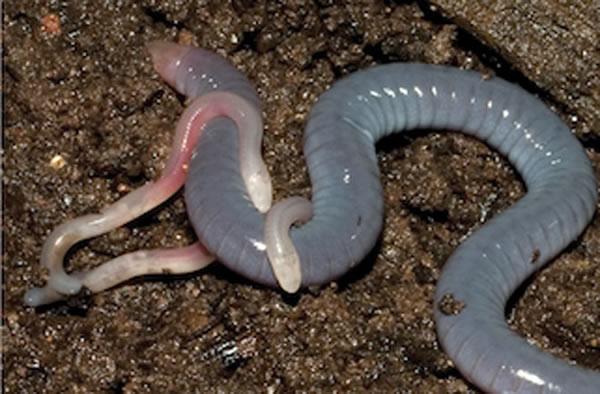Mom Feeds Her Own Skin to Young
Mom Feeds Her Own Skin to Young
Mothers the world over sacrifice a lot for their kids, but one of the most giving moms has to be a newly discovered amphibian mom that feeds her own skin to her offspring.
The name of the new species, Microcaecilia dermatophaga, means “little skin-eating caecilian.” It’s one of only four known species of caecilian whose young feed in this manner.
Caecilians, in turn, are animals that look like a cross between a worm and a snake, but are actually legless amphibians whose ancestors lived before dinosaurs first emerged.
“What we’ve found is another species that’s a skin-feeder, but most importantly, it’s another species that’s quite distantly related to other skin-feeders we’ve found, meaning that skin-feeding is probably an ancestral characteristic for caecilians,” co-author Emma Sherratt from Harvard University told the Natural Environment Research Council.
The little skin eater was discovered in French Guiana. Caecilians like this only live in the moist tropics and most are underground.
To humans, their method of feeding kids is pretty stomach churning. Mom grows an extra layer of fat-rich skin. Her young, which have specialized skin-eating teeth, then scrape it off and eat it as they’re growing and maturing. The special teeth are replaced with pointier ones as they grow older. At that point, the nearly blind animals mostly feast on worms and termites, so you’d probably want to have them living under your house.
“From an evolutionary perspective, finding another species that’s a skin feeder gives us a better understanding of when this trait actually evolved,” said Sherratt, “and perhaps whether it has evolved many times or whether it’s a key characteristic for a lot of species, in which case caecilians may have developed this specialised maternal care very early on in their evolution.”
She continued, “They are still very poorly understood compared to most other creatures, so any information we do find out gives us that just that little bit more knowledge about the secret lives of these creatures that spend their entire lives underground, and seemingly have been around for a very long time.”
“Molecular estimates tell us they are probably around 250 million years old, which means caecilians survived whatever killed off dinosaurs, and many other creatures around the world, and for that reason I think they’re quite extraordinary.”
Mar 25, 2013 02:05 PM ET by Jennifer Viegas












